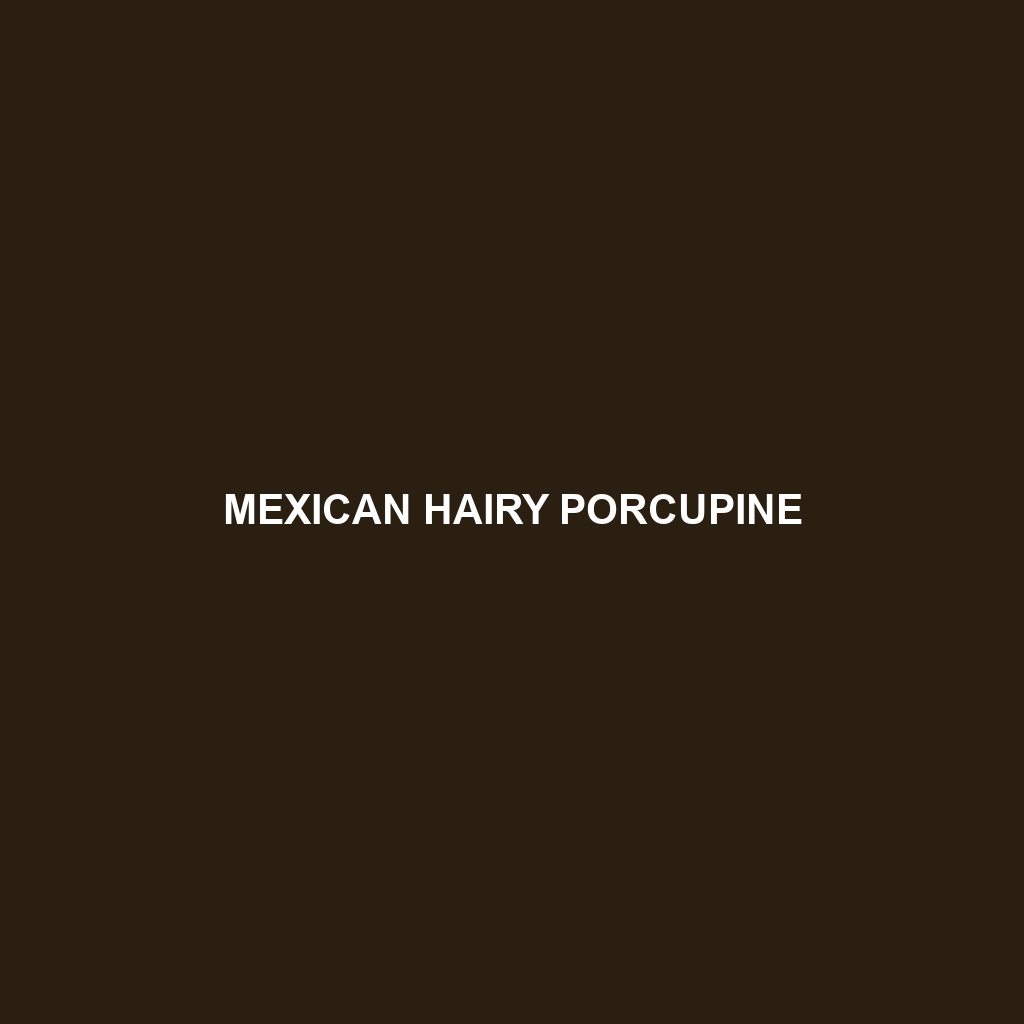Mexican Hairy Porcupine
Common Name: Mexican Hairy Porcupine
Scientific Name: Coendou mexicanus
Habitat
The Mexican Hairy Porcupine primarily inhabits the tropical and subtropical forests of Mexico and Central America. These creatures are often found in high-altitude regions, specifically in areas that offer abundant vegetative cover, such as moist woodlands and dense rainforest canopies. The species thrives in environments where they can easily access their food sources and avoid predators.
Physical Characteristics
The Mexican Hairy Porcupine typically weighs between 5 to 12 pounds and measures about 20 to 28 inches in length, not including its tail. They are characterized by their dark brown to black fur, interspersed with long, white quills that give them a distinctive appearance. Their rounded body shape and short legs are accompanied by a prehensile tail, which aids in climbing and foraging.
Behavior
These nocturnal animals exhibit solitary behavior, primarily being active during the night. They are skilled climbers, often ascending trees in search of food or shelter. Mexican Hairy Porcupines communicate using a variety of vocalizations and physical cues, displaying a fascinating social structure, especially during breeding season.
Diet
The diet of the Mexican Hairy Porcupine mainly consists of leaves, fruits, and flowers. They are particularly known for their fondness for the cambium layer of certain trees, which constitutes a significant part of their diet. This feeding behavior also contributes to their role in forest ecology by aiding in plant regeneration.
Reproduction
Mexican Hairy Porcupines have a breeding season that typically occurs between late summer and early fall. After a gestation period of about 190 days, females usually give birth to a single offspring. The young are born with soft quills that harden shortly after birth. Maternal care is crucial for the first few months, with the mother providing sustenance and protection.
Conservation Status
The current conservation status of the Mexican Hairy Porcupine is classified as **Least Concern** by the IUCN Red List, although habitat destruction and hunting pose potential threats to their populations. Ongoing conservation efforts are important to ensure their habitats remain protected.
Interesting Facts
One fascinating fact about the Mexican Hairy Porcupine is its ability to rotate its quills independently, allowing it to maneuver effectively among branches while climbing. Additionally, they have been documented to use their sharp teeth to defend themselves against predators, showcasing their adaptability in the wild.
Role in Ecosystem
The Mexican Hairy Porcupine plays a significant role in its ecosystem by influencing plant growth through its feeding habits. By consuming leaves and branches, they aid in the natural pruning of trees, allowing for healthier forest dynamics. Their interactions with other species also contribute to a balanced ecosystem, where they may serve as prey for larger predators.
